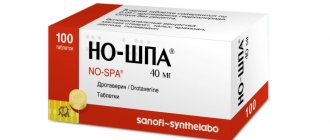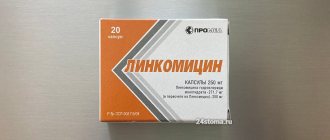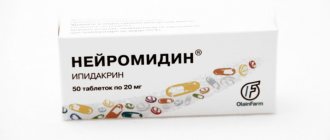Alcohol-containing dosage forms of Bromhexine and endogenous alcohol
The medicine belongs to the group of secretolytics and stimulants of motor function of the respiratory tract. It has an expectorant and antitussive effect. Increases the activity of the ciliated epithelium. Stimulates the formation of endogenous surfactant (a substance that covers the alveoli and prevents their collapse), stabilizing alveocytes during breathing. Available in tablet form (4 mg and 8 mg tablets), as well as in the form of ointment, syrup or drops. The syrup contains 12.5% vol. 96% ethyl alcohol, while the volume of ethanol drops is 41%.
Ethyl alcohol in low concentrations is a natural metabolite. The natural alcohol content in the body of a healthy person is 0.01-0.1‰.
Natural alcohol is divided into:
- Conditionally endogenous or physiological, synthesized during enzymatic processes during the digestion of food. Its participation in metabolism is similar to the fate of alcohol supplied with alcoholic beverages.
- True endogenous alcohol is formed as a result of metabolic processes and takes part in cellular respiration. Found in alveo- and hepatocytes.
“Dose” of alcohol and types of alcoholic drinks
The concept of “alcohol” includes various alcoholic beverages such as beer, champagne, red or white wine, vodka or brandy. To calculate the ethyl alcohol taken, a conditional value is used, which is called the “dose”. Dose is the average indicator of an alcoholic drink consumed, corresponding to the onset of an average degree of intoxication for a person weighing 60 kg. For comparison, 1 dose of beer corresponds to 355 ml of drink (5% ethanol by volume), table wine - 150 ml (12% ethanol by volume), port wine - 100 ml (17% ethanol by volume) and vodka or brandy - 45 ml (40 % vol. ethanol). Clinical observations indicate that the absence of the effect of alcohol on the body is usually observed when its concentration in the blood plasma reaches 0.5-3.0‰.
The effect of Bromhexine and alcohol on the respiratory system
This drug is a synthetic analogue of the alkaloid vizicine and is used as an adjuvant:
- For the treatment of acute and chronic diseases of the respiratory system (bronchi, trachea and lungs), accompanied by the formation of thick and viscous sputum.
- When conducting studies of the bronchi (for example, bronchography), with the concomitant introduction of radiopaque substances into them.
- In the pre- and postoperative period (during surgical treatment of the respiratory system).
Bromhexine increases secretion volumes, reducing the viscosity of sputum (depolymerizes mucoprotein and mucopolysaccharide fibers), which facilitates its secretion. Has an antitussive effect. The pronounced effect appears 2-6 days after the start of treatment. A significant advantage of the drug is its low toxicity.
The respiratory organs become a target for alcohol due to the fact that approximately 5% of alcohol and its breakdown products (including toxic acetaldehyde) are excreted through the lungs, which leads to irritation of the bronchial epithelium and damage to lung tissue.
What is it used for?
The drug is an expectorant and is prescribed for the treatment of cough in children and adults. Efficiency is due to the ability of the components included in the tablets or syrup to dilute mucus and promote its removal.
Bromhexine stimulates the secretory cells of the bronchial mucosa, where sputum is produced.
Indications:
- bronchial asthma;
- tracheobronchitis;
- Chronical bronchitis;
- pneumonia.
All diseases are characterized by the formation of thick, difficult-to-dispose secretions.
The effects of ethanol and Bromhexine on the digestive organs and kidneys
The group of relative contraindications for Bromhexine includes peptic ulcer of the stomach or duodenum, as well as liver and kidney diseases.
Pain in the epigastric region when drinking alcohol is caused by the damaging effect of the substance on the mucous membranes of the stomach and small intestine, including the duodenum and jejunum.
Bromhexine itself has an irritating effect on mucous membranes. In addition, a number of its dosage forms contain propylene glycol, which can enhance the irritating effect of alcohol on the mucous membranes of the gastrointestinal tract.
After absorption and “passing” through the liver, the bioavailability of Bromhexine is reduced to 20% due to demethylation and subsequent oxidation. The active metabolite of Bromhexine is Ambroxol. Bromhexine is excreted mainly by the kidneys. Its half-life is 15 hours. Alcohol has either a direct hepatotoxic effect or provokes inflammatory changes in the liver, accompanied by stagnation of bile. In addition, by triggering autoimmune processes, ethyl alcohol can cause chronic kidney disease - alcoholic nephropathy.
Contraindications
The use of the drug in the following situations is strictly prohibited:
- Lactation period in women.
- The period of exacerbation of peptic ulcer of the gastrointestinal tract.
- First trimester of pregnancy.
- Children's age: up to 2 years for syrup and 6 years for tablets.
- Intolerance to the components of the drug.
- Hypersensitivity to sugars.
When consulting with a doctor, be sure to notify about the presence of illnesses or pregnancy. This way the doctor can prescribe safe and effective treatment.
Bromhexine and alcohol
So I'm back))) I'm looking for ribomunil! I can also exchange for a hoverboard, a size 18-20 bicycle for a boy, new orthopedic shoes for a boy, starting from the first steps; new shoes for boys size 33, 34, 35 (minimen, ecco, geox type), diapers or panties, size L, only Moony, Merries, Goon, Doraemon, Dress. Infant goat milk formula Kabrita 2, Kabrita porridge with normal terms. Stroller Aprica Luxuna, can be used, but in excellent condition. Gift cards, especially for technology and children's stores. New frying pans (gas stove. Continue reading →
The most important winter holiday is approaching, which is characterized by a long series of days of rest and special events. At this time, especially in the first 2-3 days, as a rule, only emergency medical services work, and a variety of situations can arise. Moreover, 24-hour pharmacies are not available everywhere. Festive events are fraught with errors in nutrition, excess alcohol, poisoning and other undesirable health consequences. Continue reading →
You can use the search and see the medicine... is it compatible with guards. Maybe someone will need it... The article helped me dispel my doubts. Medicines prescribed after childbirth Magazine » Childbirth » Me after childbirth To the fact that we are “fed” with various kinds of medications during pregnancy - from harmless folic acid to pills whose contraindications include this very “pregnancy” - we, It seems like we've already gotten used to it. The expectant mother is ready to endure anything just to carry and give birth to a healthy baby. Many, however, only pretend that. Continue reading →
Medications while breastfeeding Most medications are not recommended when breastfeeding. This is primarily due to the lack of relevant research. There is a small list of studied medications that can be used while breastfeeding. Most of these drugs do pass into breast milk, so they should be used with caution when breastfeeding (i.e. strictly according to indications, not exceeding the dose and monitoring the child’s condition). In the case of a pronounced negative effect on the child’s body, the drug is considered contraindicated when breastfeeding. How does the medicine affect the child’s body? The degree of adverse effect. Continue reading →
A very long post about “fuflomycins”. If anyone is interested, please see cat. For those who are not interested, goodbye. I will delete comments like “Why did you write so much, I didn’t even finish reading it” or “But it still helps me”, no offense. The list was formed on the basis of the lack of convincing data on the effectiveness of drugs for the stated indications, as required by evidence-based medicine, as well as the absence of authoritative sources and recommendations. So you can explain this whole topic to an individual and ask: “Do you understand?” - he or she. Continue reading →
I look sad - My head hurts. I'm sneezing, I'm hoarse. What's happened? It's the flu! Continue reading →
Bromhexine - a proven cough remedy
The effectiveness of bromhexine has been confirmed by medical practice for a very long time - long before evidence-based medicine was recognized as the “gold standard” of quality, therefore this drug is classified as over-the-counter.
The modern pharmacological market offers customers several commercial names for this drug:
- Ambroxol.
- Lazolvan.
- Ambrobene.
- Bromhexine Berlin-Chemie.
In what cases is it recommended to take Bromhexine?
The drug taken orally has a pronounced secretolytic and secretomotor effect on the mucous membrane of the bronchial tract. Accordingly, as a result of the implementation of this effect, the intensity of bronchial secretion increases significantly, the viscosity of mucus (sputum) decreases and the activity of the cilia of the ciliated epithelium increases. All these factors together contribute to the acceleration of the movement of mucus (phlegm) through the respiratory tract.
Please note that Bromhexine is effective only for dry cough. Accordingly, it makes sense to use it (like all other mucolytics) in the initial stage of the disease. If the patient is already expelling large quantities of sputum, then there is no point in enhancing the mucociliary effect - with a high probability this can lead to the syndrome of “flooding” the bronchial tree with sputum, and will worsen the patient’s condition.
Pathologies (diseases) for which it is recommended to take bromhexine include infections of the upper, lower and middle parts of the respiratory tract (bronchitis, laryngitis, pneumonia). Please note that even with the mildest viral infection, Bromhexine is used only in complex therapy, because it does not directly affect the microorganism that caused the disease. This drug only alleviates the patient’s condition by helping to remove phlegm.
special instructions
While taking Bromhexine, you must take plenty of fluids. This will improve the expectorant properties of the active ingredients.
To facilitate the discharge of secretions, it is recommended to do a vibration massage. To do this, you need to lay the child slightly upside down and use tapping movements to move from the shoulder blades to the head.
The medicine is prescribed in complex therapy together with herbal preparations containing essential oils (menthol, peppermint, eucalyptus oil).
Typically, the effect of using the drug becomes noticeable on the 4-5th day of treatment.
Expiration date and how to store
The drug can be used for 2 years from the date of manufacture.
Bromhexine should be stored at a temperature not exceeding +25°C, hidden from direct sunlight and kept away from children.
Dosage and frequency of administration
Bromhexine should be taken only after meals, with plenty of liquid - this rule is true both in the case of tablets and in the case of taking syrup.
Adult patients and adolescents over the age of 14 years take 8-16 mg (1-2 tablets) 3 times a day. In terms of the active substance, this amounts to 24-48 mg/day of bromhexine hydrochloride.
Children from 6 to 14 years of age, as well as patients weighing less than 50 kg: 8 mg (1 tablet) 3 times a day is indicated. In terms of the active substance - 24 mg/day of bromhexine hydrochloride.
Syrup in children is taken in a dose of 2.5 to 10 ml once a day. – calculated based on body weight, a gradation scale is included with instructions.
The duration of the course of taking the drug is determined solely on an individual basis - depending on the severity of the patient’s condition, the presence of concomitant diseases and drugs taken in parallel with Bromhexine.
If the patient has a history of impaired renal function or other severe somatic diseases, the dosage should be reconsidered - ideally together with a specialized specialist.
Instructions for use of bromhexine
Tablets are taken orally at 8 mg. 2 times a day. Children over 2 years of age are given 4 mg. 2 times a day. In the form of inhalations and syrup, the dosage is no different, approximately 8-9 mg. 3 times a day. The course of treatment is up to 6 days. Use for children for a longer period of time should be discussed with a doctor individually. During postoperative therapy for sputum discharge, the recommended dose is approximately 2 mg.
Dosage in tablets for adults
As a therapy for the treatment of cough, adults take 2-3 tablets 2 times a day, depending on the type of cough of the patient.
Bromhexine Berlin chemical syrup for children instructions for use
Syrup for children has a pleasant taste and smell. You can find syrup in the pharmacy in the form of an apricot suspension, which makes its use pleasant for the child. The formula of the product does not suffer and has antimicrobial and anti-inflammatory effects. Children can also take tablets, which must be calculated depending on the child’s body weight.
Bromhexine during pregnancy
The medication should not be used by pregnant women to avoid harmful effects on the fetus. If this cannot be avoided, it is worth assessing the possible risks and benefits for the mother. The medicine can pass into breast milk during lactation and breastfeeding.
Use of the drug for alcoholism
Alcoholism is the state of alcohol dependence, leading to the formation of inflammatory diseases of the abdominal organs. Gastritis and colitis occur, which then turn into ulcers. The greater impact falls on the liver tissue.
Hepatocytes are destroyed and an inflammatory reaction occurs. Both conditions are not contraindications for taking the medicine, but against the background of addiction, its use is not recommended.
If prolonged use of the drug can cause an increase in liver enzymes, then alcoholism forms hepatitis. Due to the increased impact on the organ, the stage of fibrosis occurs faster.
Bromhexine tablets reviews
According to numerous reviews on the Internet and forums, one can note the mild effect on the body and the high effectiveness of the product. The drug fights pathogenic microorganisms and enhances the secretion and discharge of sputum.
Contraindications
- 1. Pregnancy
- 2. Hypersensitivity to bromhexine and its derivatives
- 3. Individual intolerance to the drug.
Side effects:
- 1. Headache, dizziness, confusion
- 2. Allergic reactions on the skin - rash, dermatitis, urticaria
The drug is compatible with alcohol. Does not affect vehicle control. Cases of overdose have not been registered, however, if you feel nausea, headache or poor health, you should stop taking the drug.
What side effects may there be
Unpleasant consequences of using Bromhexine can be caused by an overdose or the patient’s individual intolerance to the components of the drug. These are:
- indigestion;
- nausea and vomiting;
- dizziness;
- headache;
- rash on the body, redness of the cheeks, nasal congestion, Quincke's edema;
- increased activity of liver derivatives.
Basically, the medicine is easily tolerated and does not cause any discomfort.
Analogs
The drug has a number of analogues that are used during the period when bromhexine does not cope. If you have bronchitis or an allergic cough, you should consult a doctor before use. The mechanism of action is approximately the same. It is better to avoid simultaneous use with bromhexine. Overdose is impossible. For a list of side effects, see the instructions.
Bromhexine or Lazolvan, which is better?
Lazolvan is a medicine that causes virtually no side effects. Suitable even for newborns.
Description, customer opinion, what is the difference, advertising, solution, medicine for children, photo, the same thing, recipe in Latin, annotation, is it possible in the first trimester, tablets or inhalations - more detailed information can be requested at the pharmacy or on the forums in Internet.
Consequences of drinking alcohol
If a person drinks alcohol once during treatment with a mucolytic, no serious adverse reactions will occur.
But if you use the medicine throughout the entire therapy, the following consequences occur:
- nausea, vomiting, due to which all the medicine taken is evacuated from the digestive tract, so there is no therapeutic effect;
- allergic skin reactions, manifested in the form of a rash, but they disappear after stopping the use of both substances;
- high risk of spasm in the bronchi due to the accumulation of exudate, which can lead to a severe attack of suffocation and increased coughing;
- alcohol leads to increased kidney function, so fluid is removed from the body faster, dehydration occurs, which thickens the sputum even more;
- with constant violation of the rule, gastritis is formed, which transforms into a stomach or duodenal ulcer;
- if the patient had inflammation of the gastrointestinal mucosa at the time of treatment, the risk of bleeding increases.
To clarify the possibility of consequences, consult a therapist about the joint use of substances.



